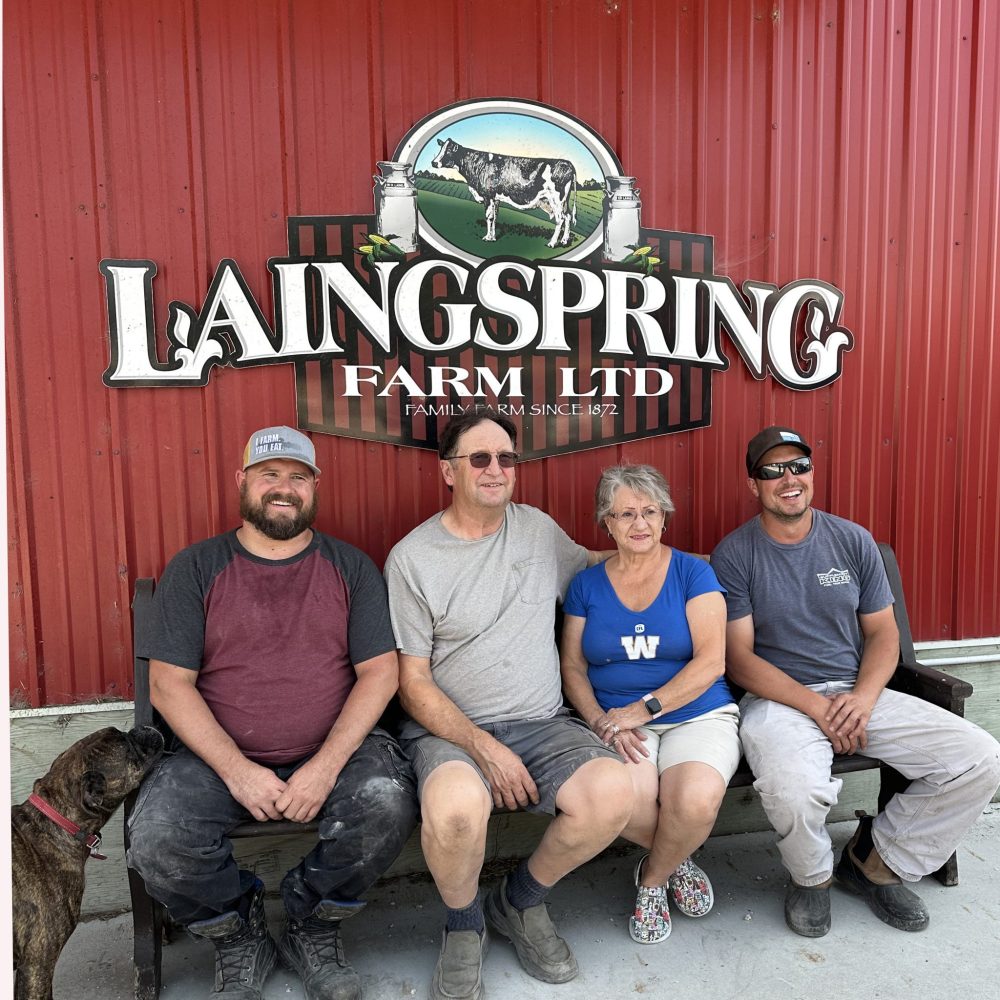Fifth generation of Laings still farm at Clear Springs
Advertisement
Hey there, time traveller!
This article was published 14/08/2023 (729 days ago), so information in it may no longer be current.
Ray and Bertha Laing no longer go to the barn every day to do the milking, but neither do their sons Tyrone and Ted, who represent the fifth generation of the family at Laingspring Farm. But that doesn’t mean the cows have disappeared from this 151-year-old family farm in Clear Springs.
Ray and Bertha have retired and the boys have let robots do their milking ever since they switched from an overcrowded tie-stall barn to a new and spacious robot-equipped barn, nearly a decade ago.
Before that new barn went up, the Laings had been milking 150 cows in a 100-stall barn, meaning they had to move 50 cows in and out at every milking.
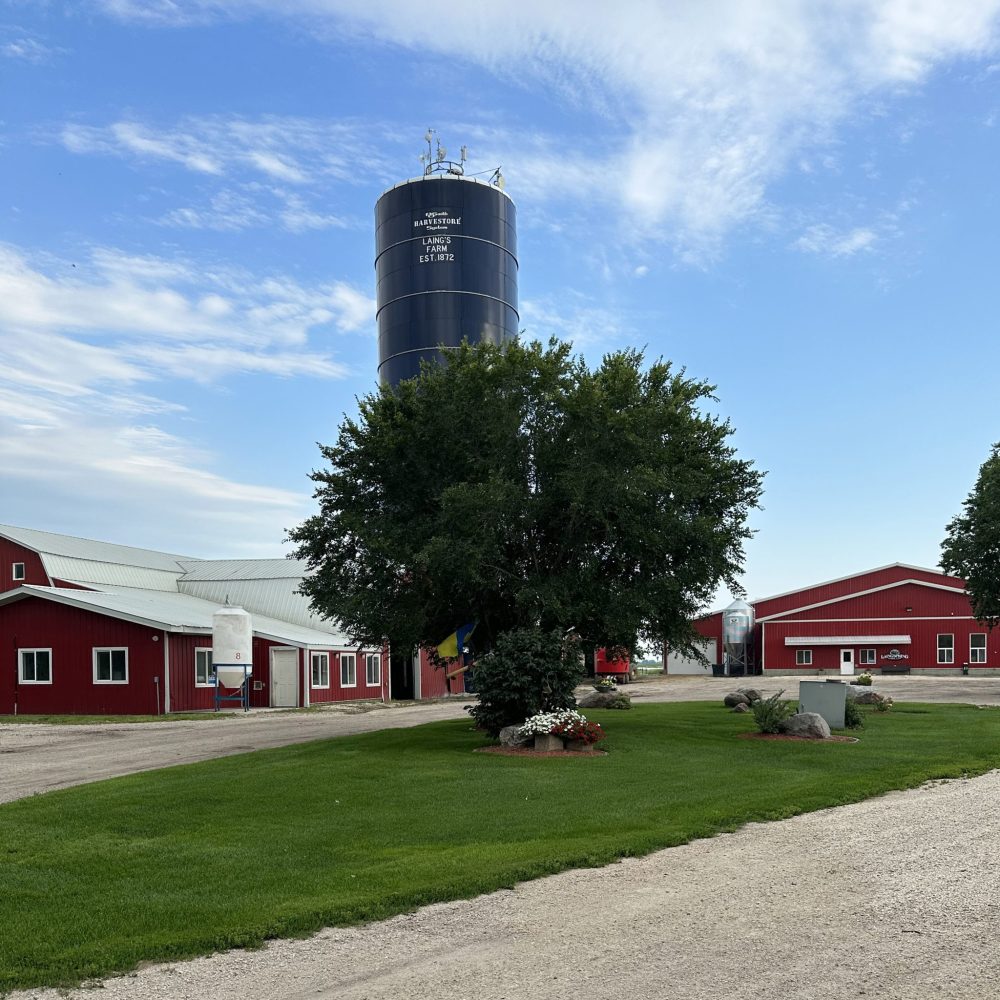
When Ted and Tyrone came on as partners in 2013, the decision to expand was made. Both boys grew up on the farm, feeding calves when they were six or seven, and have taken on milking chores and have been operating machinery since they were 13.
Ray had also grown up at Laingspring, but was not all that interested in becoming a dairy farmer when the time came to make that decision. He had a number of other things on the go, and it was 1972 when Ed and Alice sold the quota and cows, while continuing with the field work and crop production.
When Ray and Bertha got married in 1974, he was making hay on the farm in addition to his full-time job at Penner’s Transfer, while Bertha was managing a restaurant in Steinbach. Together they were working three jobs and after two years of doing that, Bertha and Ray felt they needed to decide what they wanted to do. Farm? Buy a restaurant? Or what?
Neither offers any suggestions as to what came up in their “Or what?’ discussions, but suffice it to say they decided a return to Laingspring Farm was their best option for their future.
It was 1979 when Ray and Bertha became dairy farmers, buying a herd and renting a farm south of Steinbach, while a new barn was being built on the Clear Springs farm.
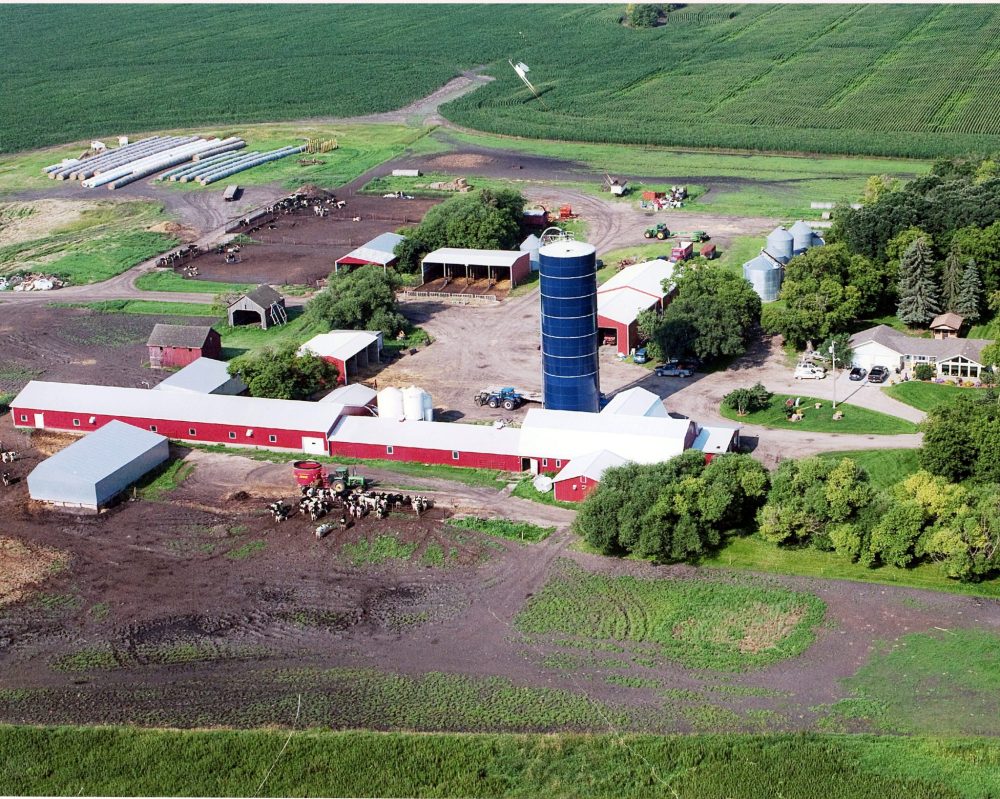
They milked those cows in their rented barn from November until the following July, when they finally got to move back to the Laing homestead and Ed and Alice moved to Steinbach.
Bertha says her introduction to farming was definitely a crash course. She remembers one of the first times she was nervously driving the grain truck and was eagerly waiting to be relieved by a neighbor. She saw him parked on the road, watching her back up to the bin and unload, and then he drove away. He later said he didn’t think she needed any help as she was doing just fine.
Bertha tries hard to keep from laughing as she recalls the time when she left her husband out in the field during a heavy rainstorm. The tractors didn’t have cabs in those days and she didn’t realize that when it was raining she was supposed to go out with the truck to pick him up. When she finally realized Ray wasn’t coming back to the farmyard, she went out to find a very disgruntled husband hiding under the tractor, trying to get some protection from the down pour.
In those early years, Bertha kept a huge garden, but she finally quit when her busy life as a farmer’s wife got too busy for her as a gardener and the canner of a winter’s supply of vegetables.
Bertha says she did get a little help along the way to make that decision, because every year Ray would erect another grain bin on her garden plot, until she had very little growing space left.
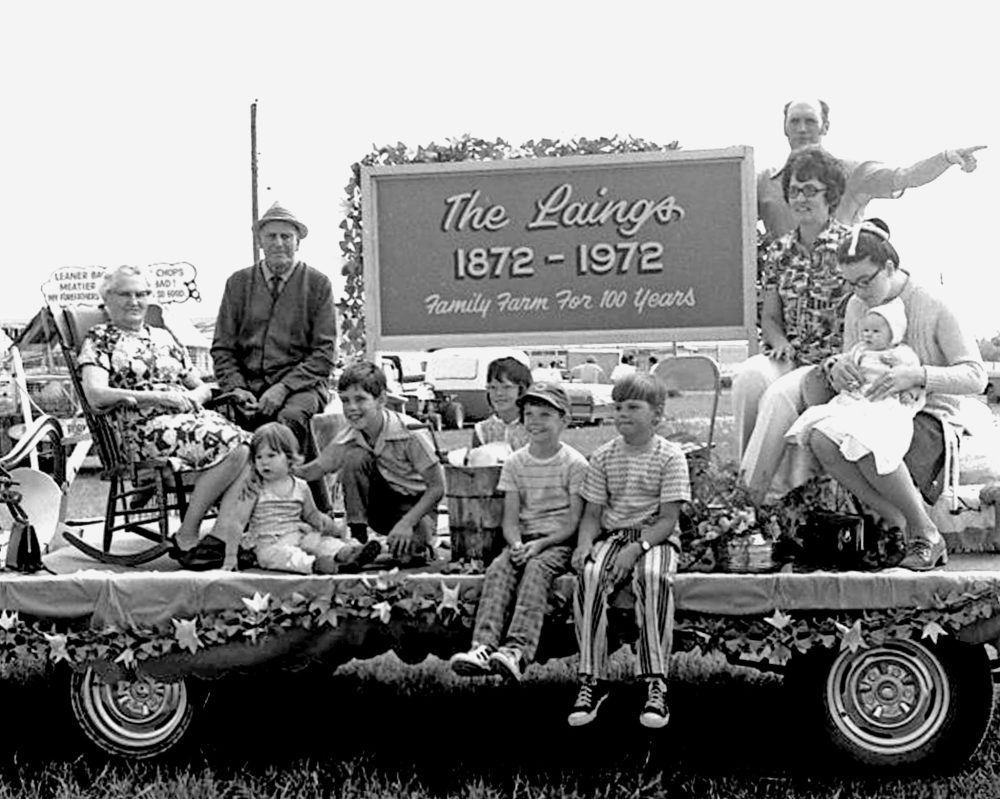
Ray says his wife’s green thumb was evident when he had put a bin directly over her rhubarb patch. The next spring, rhubarb stalks grew right out from under that grain bin, producing a crop of rhubarb next to that bin for many more years. That stuff grows everywhere, he complains.
Bertha’s final decision to not make a garden any more came during a very successful year of growing cucumbers.
When harvest time came, she found herself hauling grain and canning at the same time. Haul a load, can a bunch of pickles, haul another load, can another bunch of pickles.
“This is crazy, I don’t need a garden,” she told herself.
Bertha says if she was to offer advice to any young woman aspiring to become a farmer’s bride, it would be to take a course in sign language before making any attempt to help her husband to deal with the daily farm chores.

“When I was operating machinery, Ray would wave his hands and make all kinds of signals, which I was supposed to take as directions of what to do next.”
A wife who doesn’t know a farmer’s sign language is at a real disadvantage, when it comes to communicating over the roar of a tractor engine.
Ray says the farm has always produced all of its own feed with an eye on having a surplus of crops every year. It’s more fun to be selling than to be buying, he says.
As the herd grew, the farm purchased a few more pieces of land and rented others. Today, the boys farm some 1,100 acres. The Laings always had a bit of help, and now, besides the boys there are three full-time and three part-time employees.
When the new barn was built, the tie-stall barn was renovated from front to back, and cows having calves out in the pasture became a rarity rather than a common occurrence.
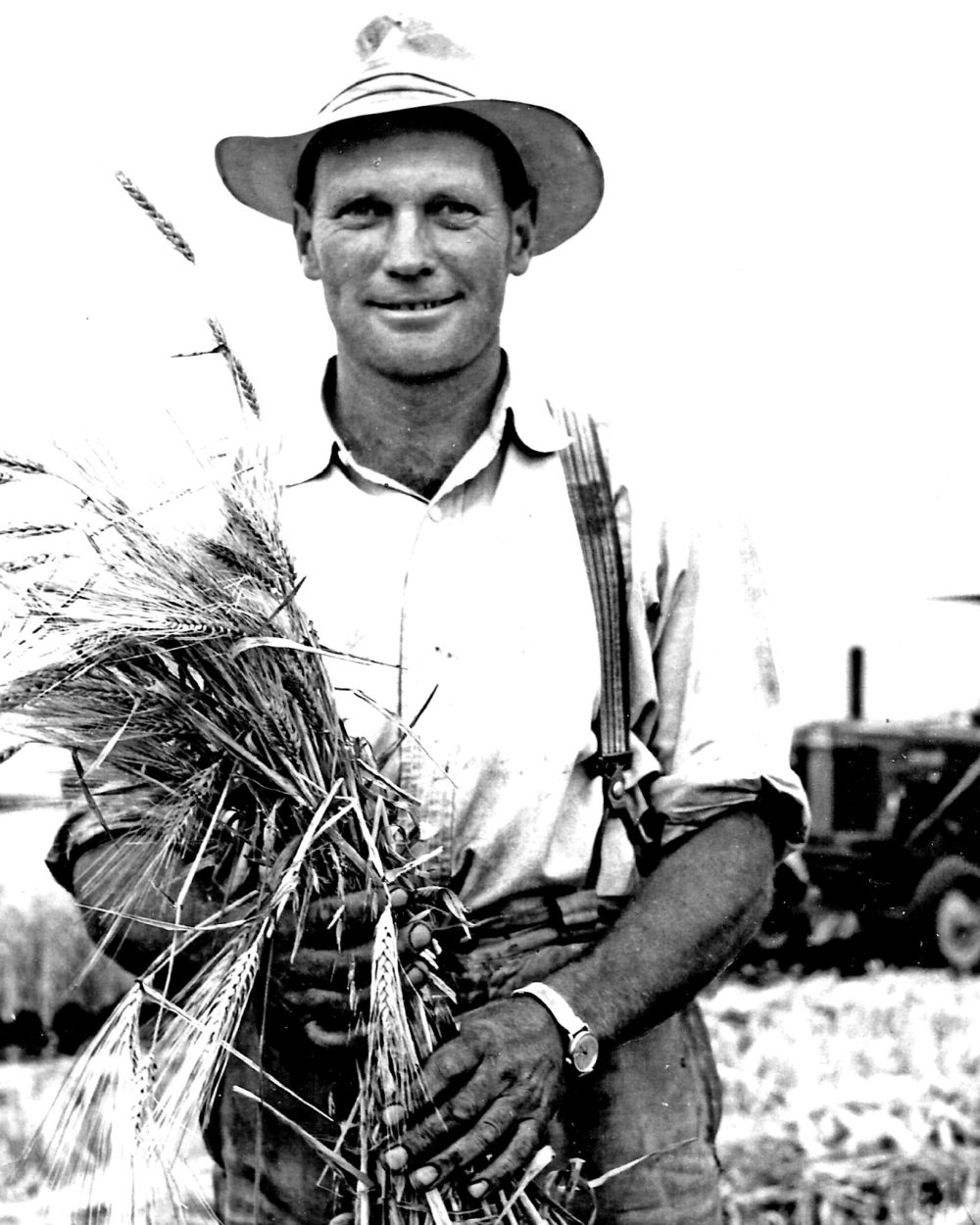
Most of the calving happens indoors now, but there was the odd occasion when a calf was born in the pasture. The problem then was finding the calf to return it to the barn. Cows are very protective and would hide their calves in the tall grass along the fence line.
When Ray and Bertha approached, the cow headed off in another direction to mislead them. Ray says it was amazing how well something black and white could be hidden in the tall grass.
While trying to find a young calf in daylight was quite a chore, it was nothing compared to the dilemma faced by Bertha and Ray when a number of their cows escaped the pasture and headed west, at night, in the dark.
The lesson learned was that it was futile to try to chase cows in the dark. They finally gave up, hoping against hope their herd wouldn’t end up grazing on the Steinbach golf course.
They were quite relieved to find the cows had crossed Highway 12 and were quietly grazing near Twin Creek, when they went with a cattle trailer to pick them up the next morning.
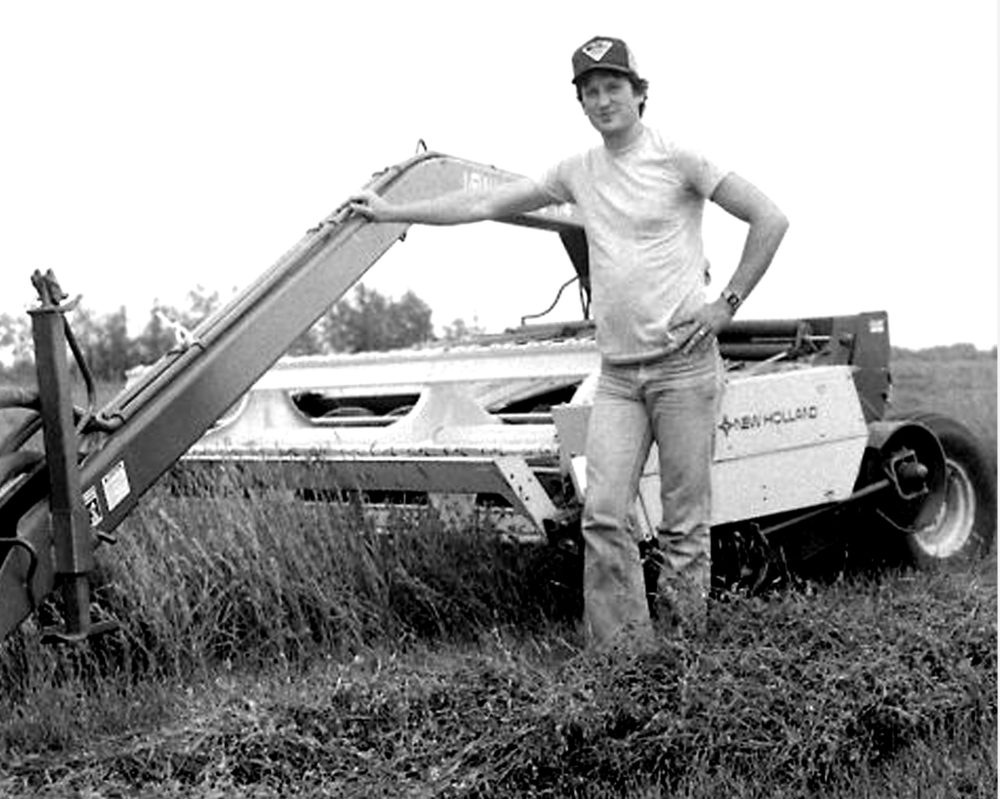
In spite of the many ups and downs, Ray and Bertha have thoroughly enjoyed their time as the fourth generation of Laings farming the family homestead.
But nothing is forever and although 151 years may come close, the future of the homestead established in 1872 by Thomas Laing will be up to the fifth generation farming there.
Thinking back a decade, Ray says if Ted and Tyrone had decided to pursue careers off the farm he may well have followed his father’s example and sold the cows and the quota and kept farming the land. Their oldest son, Blake, was severely allergic to cows and had pursued a career in plumbing and heating.
Ray says he had the opportunity to try a number of things before deciding dairy farming was for him and there may come a time the boys decide they would like to try something else, as well, he says.
Five generations and 151 years on the same farm may be considered by many to come close to being forever. But long after the oldest Clear Springs family farm is no longer operated by the Laing family, Laingspring Farm will be remembered as the place where farming in this corner of Southeastern Manitoba got its start.

